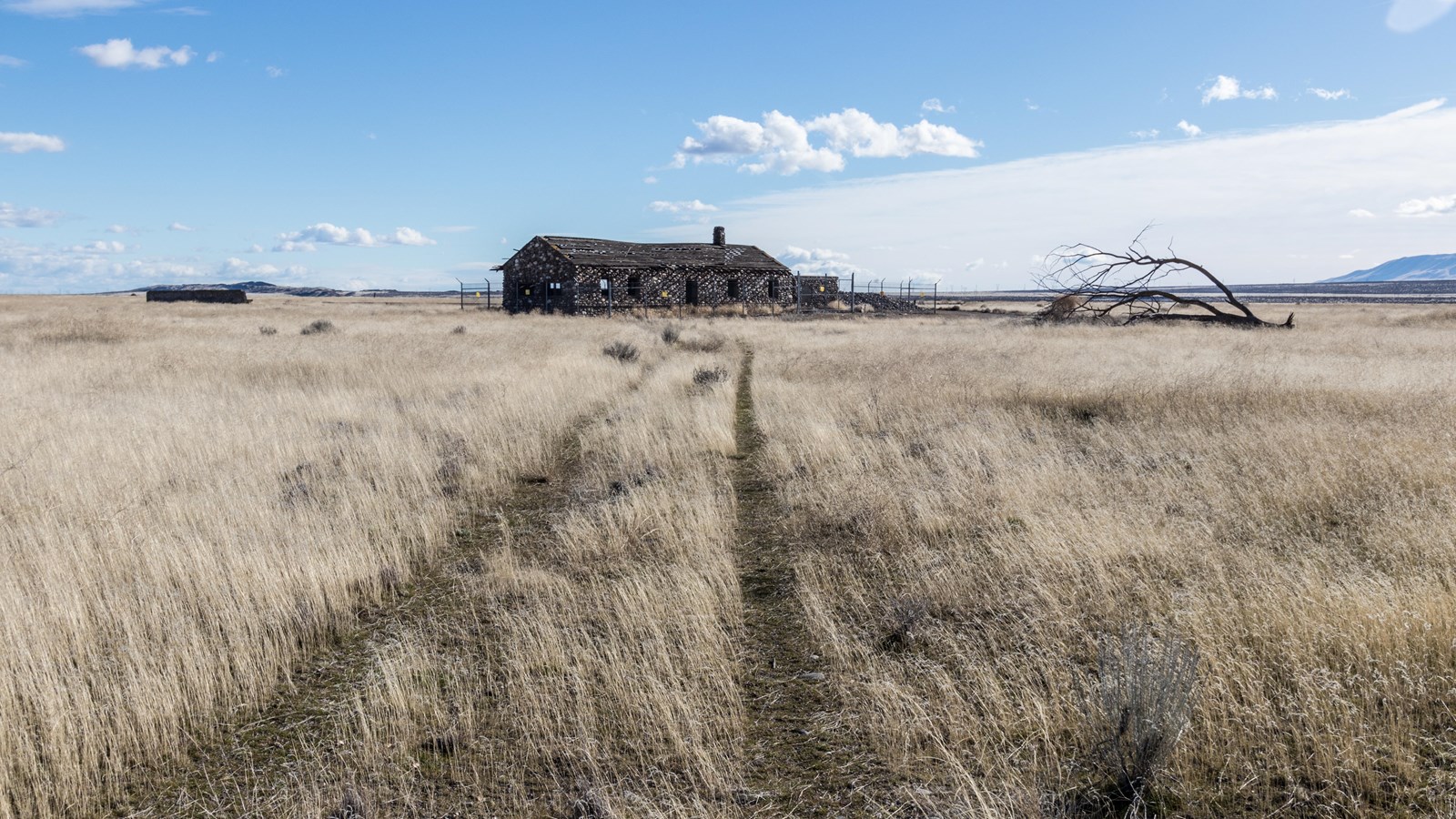Last updated: January 17, 2023
Place
Bruggemann Ranch

NPS/BURGHART
A shadow of its former self, this weather-beaten structure is a remnant of the farms that dotted the Columbia Basin in the 1800s and early 1900s. Water pumped from the Columbia River made farming possible—and marginally profitable—before the arrival of the Manhattan Project.
Through determination and hard work, farmers grew a variety of crops here, including peaches, apricots, and asparagus. The milder climate of the region allowed valuable crops, such as the Bruggemann’s cherries, to ripen early. These crops arrived at market sooner than those grown elsewhere in Washington, which greatly increased the prices local farmers received for their produce.
In 1913, the Chicago, Milwaukee, and St. Paul Railroad completed a spur line to the nearby Priest Rapids area.This allowed farmers to ship perishable produce reliably and profitably to urban markets in the Pacific Northwest and beyond.
The cobblestone building material of the Bruggemann Ranch demonstrates the backbreaking labor required to transform this arid grassland into farms. Homesteaders had to remove many hundreds of stones before first furrow could be plowed.
Bruggemann Ranch was one of the most successful farms in White Bluffs before the Manhattan Project. Yet Paul and Mary Bruggemann were among the many farmers and Native Americans displaced from their homes, farms, and ancestral lands via the government’s power of eminent domain when General Leslie Groves selected this area for the Manhattan Project’s plutonium production facilities.
Five-year-old Ludwig Bruggemann would never forget when two military jeeps arrived at his home. He remembers the military men instructing his parents to move within two months. He recalled, “I was in the pen with the goats. Before the jeeps left, one of the goats had kicked me over, just knocked me over. My mother was extremely excited about that, but nothing happened. He just knocked me over.”
Because recent extensive orchard improvements had yet to bear fruit, the Bruggemanns disputed the assessed value the US Army Corps of Engineers set for their land. They were unsuccessful. Many displaced persons shared the Bruggemanns’ sentiment that Manhattan Project personnel did not provide adequate compensation their property.
Continue Your Journey
In addition to tours of B Reactor, the Department of Energy offers the Pre-War Historic Sites Tour that visits places where local people lived, worked, and came together as tight-knit communities before the arrival of the Manhattan Project. Tour stops include the Bruggemann Ranch, White Bluffs Bank, Hanford High School, and Allard Pumphouse. You can see the location of the former White Bluffs community from the White Bluffs Overlook, and Hanford High School Overlook from the White Bluffs trail on the Hanford Reach National Monument.
